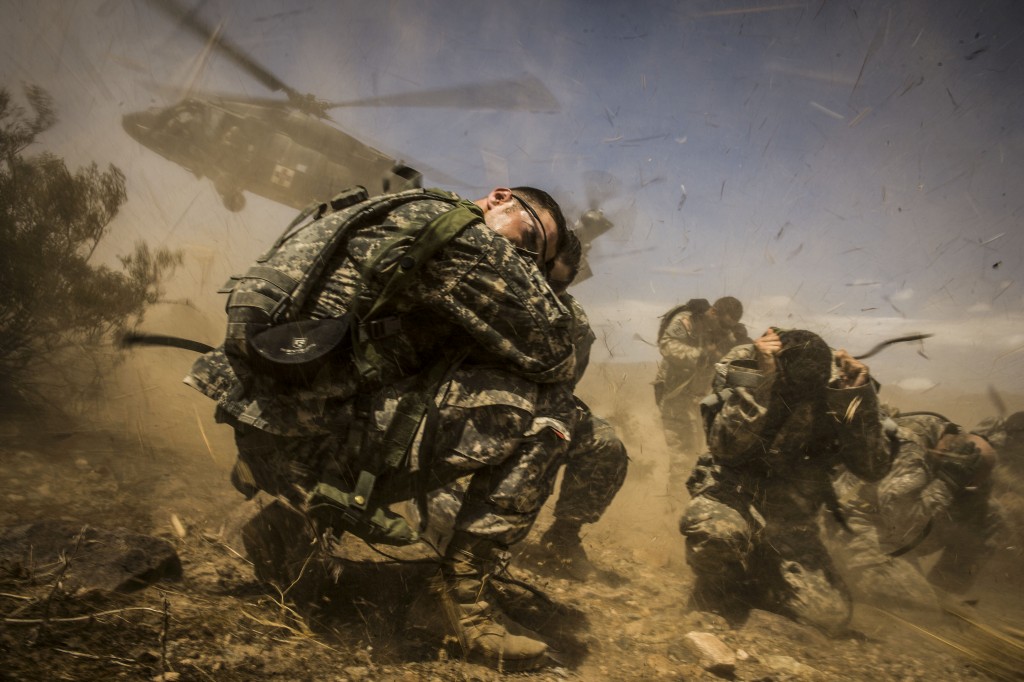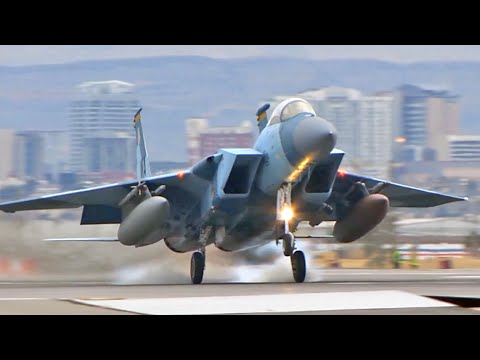Army aviation operates in worldwide missions while balancing the challenges of the deployments with maintaining training and readiness, Army aviation commanders said.
The commanders addressed the topic during a panel at the Association of the United States Army’s forum on Army aviation, Jan. 29.
The panel featured Col. Vincent H. Torza, commander, 12th Combat Aviation Brigade, or CAB; Col. Michael H. Hertzendorf, commander, 160th Special Operations Aviation Regiment; Col. Kenneth A. Hawley, commander, 25th CAB; and Col. John O. Payne, deputy chief of staff, Aviation, Arkansas Army National Guard.
PARTNERSHIP WITH EUROPEAN ALLIES
These are “very exciting times in Europe,” said Torza, whose brigade is based in Germany. Army aviation is a critical component in a “strong Europe.”
“This is my third tour over in Europe and I’ve never been busier, nor have our aviation assets been busier in Europe,” Torza said.
The 12th CAB continues to provide full-spectrum aviation support to various Army commands, and also works with the Navy and Air Force, Torza said.
Recent missions include those to Kuwait, Iraq, Afghanistan, and Sinai for multinational force and observers missions, as well as exercises in Poland and the Baltics.
“Today’s topic of ‘Sustaining Training Readiness While Executing Theater Requirements’ is extremely relevant, and in my mind, it is probably being done every day as we speak in Europe,” Torza said.
His brigade focuses on multinational training and interoperability.
“For us, as the 12th CAB, being right now the current, only Army aviation in Europe, every rotation has an aviation task force from 12th CAB,” he said.
However, interoperability is “never easy.”
One of the biggest challenges, Torza said, is communications. “We really need to work through that,” he added.
Army aviation is busy, engaged and vital, and the partnerships with allies are important, Torza said.
“These exercises are major exercises with our multi-national partners and we’re really getting at the fight and training our aviators under some very complex scenarios,” he said.
There are many challenges with language barriers and interoperability, Torza said.
“When you’re in a knife fight, that’s not the time where you want to have to transmit through three different chains to talk to the guy who’s right below you, because for some reason the security systems on the radios aren’t compatible,” he said. “You want to be able to get that information immediately.”
“We just did an exercise, and with six different countries we struggled to communicate with various different systems and these were very competent militaries. The common operating picture is critical, but it needs to be simplistic,” Torza said.
SPECIAL OPERATIONS
Hertzendorf said readiness is professional, highly-trained Soldiers who are operating reliable, modern equipment, and who are “prepared to deploy and accomplish any mission that is given to them,” he said.
To be successful, Hertzendorf said, the force needs the most modern aircraft, the ability to maintain that aircraft, Soldiers who are ready for the mission, trainers who are experienced, and resources.
“Any time one of those phases gets out of sync,” he said, “you have an inefficient training base and that causes friction and hampers your ability to maintain that readiness and grow that combat power.
“I think our greatest readiness challenge is really training the force and building that future bench while continually providing relevant capability to the nation,” he said. “Same as Army aviation, we’re seeing the effects of a downsizing Army.”
The 160th Special Operations Aviation Regiment out of Fort Campbell, Kentucky, has supported global special forces operations, as well as missions including Operations Resolute Support, Freedom Sentinel and Inherent Resolve, Hertzendorf said.
“In each of these locations we are operating and partnered with army aviation,” he said.
“This mutually beneficial relationship is formed and developed over the last 14 years,” Hertzendorf said. “It absolutely must be sustained and that level of interoperability needs to be sustained and continue to grow across the spectrum of SOF [Special Operation Forces] and conventional aviation.”
PACIFIC FOCUS
Maintaining readiness as a deployable force is essential for the 25th Combat Aviation Brigade, which is in Hawaii, and supports Pacific and other missions, Hawley said.
“We have taken the lessons learned from multiple deployments across the Pacific and applied them to improve some of our key force multipliers,” he said.
There are challenges and issues in communications, logistics, aviation maintenance, and maintaining aircrew proficiency.
“We have to balance our training requirements with our readiness requirements, ensuring that we have adequate equipment staged and ready for contingencies while ensuring we still can train our forces,” he said.
“Maintaining Soldier proficiency during multiple deployments is a real and challenging requirement,” he said.
Interoperability is a challenge, Hawley said.
“It really comes down to integrated planning sessions, integrated training sessions and multiple iterations,” he said.
“While these training-readiness challenges are out there, the successes abound. It is truly a unique experience being in the Pacific,” Hawley said.
NATIONAL GUARD
Payne, with the Arkansas National Guard, said “readiness is the keystone for what we do on a day-in, day-out basis.”
The National Guard focuses heavily on pre-deployment requirements and training throughout the year, he noted.
“Our aircrew members in the National Guard are authorized, resourced for 111 training days; most of them train between 120 and 150 days in any given year,” he said.
“Compare that to 365 in the active component, it still doesn’t sound like a lot, until you take away all the Saturdays and Sundays, 10 federal holidays, 30 days of leave, and it’s getting compatible,” he said.
The challenge for the National Guard, he said, is what to do with those training days, and also money.
“A big component of what we do is ensuring the Soldiers are ready to go out the door, and by that, they’re trained and they’re physically fit, operationally available,” Payne said.
Another challenge is that members are geographically dispersed through various states. What is needed, he said, is a mission command system that is networked and integrated for communications throughout the various headquarters and states.
Those capabilities are available, but not as “friendly” with the networks and the resources that are available, he said.
The National Guard works with other government entities and needs to have systems that can integrated with civilian agencies, Payne said.











